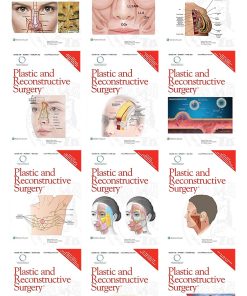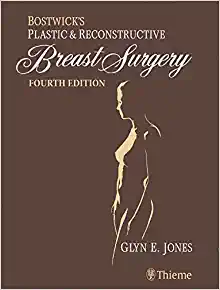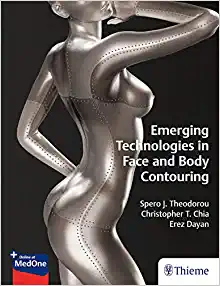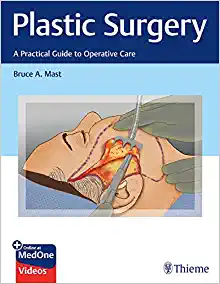Understanding the Benefits of Plastic & Reconstructive Surgery: A Guide for Patients
Discover the Benefits of Plastic & Reconstructive Surgery
Plastic and reconstructive surgery can help you look and feel your best. Whether you are looking to improve your appearance or correct a physical deformity, plastic and reconstructive surgery can help you achieve your goals. From facial reconstruction to body contouring, these procedures can help you regain confidence and self-esteem. To learn more about the benefits of plastic and reconstructive surgery, visit DentalBooks.net. Here, you can find information on the latest techniques and technologies used in plastic and reconstructive surgery, as well as tips for finding the right surgeon for your needs. With the right information and guidance, you can make an informed decision about whether plastic and reconstructive surgery is right for you.
Dental Books
PLASTIC & RECONSTRUCTIVE SURGERY
Metabolic and Bariatric Surgery Exam and Board Review (Original PDF from Publisher)
PLASTIC & RECONSTRUCTIVE SURGERY
Metabolic and Bariatric Surgery Exam and Board Review (EPUB)
PLASTIC & RECONSTRUCTIVE SURGERY
Plastic & Reconstructive Surgery 2022 Full Archives (True PDF)
PLASTIC & RECONSTRUCTIVE SURGERY
Facial Plastic Surgery Clinics of North America 2022 Full Archives (True PDF)
PLASTIC & RECONSTRUCTIVE SURGERY
Grabb & Smith’s Cirúrgia Plástica, 7th Edition (Original PDF from Publisher)
PLASTIC & RECONSTRUCTIVE SURGERY
A Arte do Contorno Corporal: Uma Abordagem Abrangente (Original PDF from Publisher)
PLASTIC & RECONSTRUCTIVE SURGERY
PLASTIC & RECONSTRUCTIVE SURGERY
Identidade de Gênero: Perspectivas Clínicas e Cirúrgicas (Original PDF from Publisher)
PLASTIC & RECONSTRUCTIVE SURGERY
Oncoplastic Breast Surgery: A Practical Guide (Original PDF from Publisher)
PLASTIC & RECONSTRUCTIVE SURGERY
PLASTIC & RECONSTRUCTIVE SURGERY
Rinoplastia: Cirurgia do Nariz Pelos Mestres, 3rd Edition (Original PDF from Publisher)
PLASTIC & RECONSTRUCTIVE SURGERY
PLASTIC & RECONSTRUCTIVE SURGERY
PLASTIC & RECONSTRUCTIVE SURGERY
Bostwick’s Plastic and Reconstructive Breast Surgery – Two Volume Set, 4th Edition (EPUB)
PLASTIC & RECONSTRUCTIVE SURGERY
PLASTIC & RECONSTRUCTIVE SURGERY
PLASTIC & RECONSTRUCTIVE SURGERY
Cirurgia Plástica Estética Pelos Mestres: The Dallas Cosmetic Model, Videoatlas (EPUB)
PLASTIC & RECONSTRUCTIVE SURGERY
Novas Tecnologias para o Tratamento Estético do Corpo e da Face (EPUB)
PLASTIC & RECONSTRUCTIVE SURGERY
The Business of Plastic Surgery: Navigating a Successful Career, 2nd Edition (EPUB)
PLASTIC & RECONSTRUCTIVE SURGERY
PLASTIC & RECONSTRUCTIVE SURGERY
Cirurgia Genital: Reconstrutora e Estética (Original PDF from Publisher)
PLASTIC & RECONSTRUCTIVE SURGERY
Principles of Facial Reconstruction: A Subunit Approach to Cutaneous Repair, 3rd Edition (EPUB)
PLASTIC & RECONSTRUCTIVE SURGERY
Masters of Cosmetic Surgery – The Video Atlas: The Dallas Cosmetic Model (EPUB)
PLASTIC & RECONSTRUCTIVE SURGERY
PLASTIC & RECONSTRUCTIVE SURGERY
PLASTIC & RECONSTRUCTIVE SURGERY
PLASTIC & RECONSTRUCTIVE SURGERY
PLASTIC & RECONSTRUCTIVE SURGERY
Introduction
Are you considering plastic and reconstructive surgery? If so, it's important to understand the potential benefits of this type of procedure. This guide will provide an overview of the advantages of plastic and reconstructive surgery, helping you make an informed decision about whether or not it is right for you. From improved self-confidence to enhanced physical appearance, there are many potential benefits that can be gained from plastic and reconstructive surgery. We'll discuss these in detail, as well as the risks associated with the procedure. By the end of this guide, you should have a better understanding of the potential benefits and drawbacks of plastic and reconstructive surgery.
Overview of Plastic & Reconstructive Surgery: Types, Benefits, and Risks
Plastic and reconstructive surgery is a medical specialty that focuses on the repair, reconstruction, or replacement of physical defects of form or function involving the skin, musculoskeletal system, craniofacial structures, hand, extremities, breast, and trunk. It can also be used to improve a person’s appearance. Plastic and reconstructive surgery can be divided into two main categories: cosmetic surgery and reconstructive surgery.
Cosmetic surgery is performed to reshape normal structures of the body in order to improve the patient’s appearance and self-esteem. Common procedures include breast augmentation, liposuction, rhinoplasty, and facelifts. Reconstructive surgery is performed on abnormal structures of the body, caused by congenital defects, developmental abnormalities, trauma, infection, tumors, or disease. It is generally performed to improve functions, but may also be done to approximate a normal appearance. Common procedures include cleft lip and palate repair, scar revision, and breast reconstruction.
The benefits of plastic and reconstructive surgery are numerous. Cosmetic surgery can help improve a person’s self-image and confidence, while reconstructive surgery can restore function and improve quality of life. In addition, both types of surgery can improve physical health by correcting deformities or improving the functioning of certain organs.
As with any type of surgery, there are risks associated with plastic and reconstructive surgery. These include infection, bleeding, nerve damage, blood clots, and allergic reactions. In addition, some procedures may not produce the desired results, or may require additional surgeries to achieve the desired outcome. It is important to discuss all potential risks with your doctor before undergoing any type of plastic or reconstructive surgery.
Overall, plastic and reconstructive surgery can be a safe and effective way to improve a person’s appearance and/or function. However, it is important to understand the potential risks and benefits before making any decisions. Be sure to consult with a qualified plastic surgeon to determine if this type of surgery is right for you.
Exploring the Different Types of Plastic & Reconstructive Surgery Procedures
Plastic and reconstructive surgery is a field of medicine that focuses on restoring or improving the appearance and function of the body. It can be used to correct physical deformities, repair damage caused by trauma or disease, and improve the overall aesthetic of the body. Plastic and reconstructive surgery procedures are highly specialized and require extensive training and experience.
The most common type of plastic and reconstructive surgery is cosmetic surgery. This type of surgery is designed to enhance the appearance of the body, usually through the use of implants, fat grafting, and other techniques. Common cosmetic procedures include breast augmentation, liposuction, rhinoplasty, facelifts, and tummy tucks. These procedures can help to improve the shape and size of certain areas of the body, as well as reduce wrinkles and other signs of aging.
Reconstructive surgery is another type of plastic and reconstructive surgery. This type of surgery is used to restore the form and function of the body after an injury or illness. Reconstructive surgery can be used to repair damaged tissue, replace missing parts, and restore normal movement and sensation. Common reconstructive procedures include skin grafts, scar revision, and hand surgery.
Another type of plastic and reconstructive surgery is microsurgery. This type of surgery involves the use of very small instruments and techniques to repair or reconstruct tissue. Microsurgery is often used to repair nerve damage, reattach severed limbs, and reconstruct facial features.
Finally, there is also reconstructive burn surgery. This type of surgery is used to treat severe burns and other injuries that have caused significant damage to the skin. Reconstructive burn surgery can involve skin grafts, tissue expansion, and other techniques to restore the appearance and function of the affected area.
No matter what type of plastic and reconstructive surgery you may need, it is important to find a qualified and experienced surgeon who can provide the best possible care. A good surgeon will take the time to understand your needs and goals and develop a treatment plan that is tailored to your individual needs.
Preparing for Plastic & Reconstructive Surgery: What to Expect
Preparing for plastic and reconstructive surgery can be a daunting process, but it doesn’t have to be. Knowing what to expect before, during, and after your procedure can help you feel more confident and comfortable with the process.
Before your surgery, you will need to meet with your surgeon to discuss your goals and expectations. During this consultation, your surgeon will evaluate your medical history and perform a physical examination. They may also take photographs of the area to be treated. Your surgeon will then explain the details of the procedure, including the risks and benefits, and answer any questions you may have.
Once you have decided to proceed with the surgery, you will need to make preparations. This includes scheduling pre-operative tests such as blood work and an electrocardiogram (ECG). You may also need to stop taking certain medications or supplements prior to the procedure. Your surgeon will provide you with detailed instructions on how to prepare for your surgery.
On the day of your surgery, you will need to arrive at the hospital or clinic early. You will be asked to change into a hospital gown and remove all jewelry and other items that could interfere with the procedure. You may also be given medication to help you relax.
During the surgery, you will be under general anesthesia. This means you will be unconscious and unable to feel pain. The procedure itself will vary depending on the type of surgery being performed. After the surgery is complete, you will be taken to a recovery room where you will be monitored until you are awake and alert.
After your surgery, you will need to follow your surgeon’s instructions for post-operative care. This may include taking medications, changing dressings, and avoiding strenuous activities. You may also need to attend follow-up appointments with your surgeon to monitor your progress.
Preparing for plastic and reconstructive surgery can be a stressful experience, but understanding what to expect can help make the process easier. By following your surgeon’s instructions and attending all necessary appointments, you can ensure a successful outcome.
Recovering from Plastic & Reconstructive Surgery: Tips for a Smooth Recovery
Recovering from plastic and reconstructive surgery can be a difficult process, but with the right preparation and care, you can ensure a smooth recovery. Here are some tips to help you get through the recovery period:
1. Follow your doctor’s instructions: It is important to follow all of your doctor’s instructions for post-operative care. This includes taking any prescribed medications, attending follow-up appointments, and following any activity restrictions.
2. Get plenty of rest: Rest is essential for healing after surgery. Make sure to get plenty of sleep and take breaks throughout the day. Avoid strenuous activities and exercise until your doctor gives you the okay.
3. Eat healthy: Eating a balanced diet will help your body heal faster. Focus on eating foods that are high in protein, vitamins, and minerals. Avoid processed and sugary foods as they can slow down the healing process.
4. Stay hydrated: Drinking plenty of water is important for flushing out toxins and keeping your body hydrated. Aim to drink at least 8 glasses of water per day.
5. Take care of your incision site: Keep the incision site clean and dry. Change the dressing regularly and avoid getting it wet. If you notice any signs of infection, such as redness or swelling, contact your doctor immediately.
6. Manage pain: Pain is normal after surgery, but it should not be unbearable. Talk to your doctor about ways to manage your pain, such as taking over-the-counter medications or using cold compresses.
7. Ask for help: Don’t be afraid to ask for help during your recovery. Friends and family can help with tasks such as grocery shopping, cleaning, and cooking.
By following these tips, you can ensure a smooth recovery from plastic and reconstructive surgery. Remember to listen to your body and contact your doctor if you have any concerns.
Financing Options for Plastic & Reconstructive Surgery: Insurance Coverage and Other Alternatives
Plastic and reconstructive surgery can be a costly endeavor, but there are several financing options available to help make the process more affordable. Insurance coverage is one of the most common ways to pay for plastic and reconstructive surgery, as many insurance plans cover some or all of the costs associated with these procedures. Other alternatives include medical credit cards, loans from banks or other financial institutions, and crowdfunding.
Insurance Coverage
Many health insurance plans cover some or all of the costs associated with plastic and reconstructive surgery. The extent of coverage depends on the type of procedure being performed and the individual’s insurance plan. Generally, insurance companies will cover procedures that are medically necessary, such as breast reconstruction after a mastectomy or facial reconstruction after an accident. Cosmetic procedures, such as rhinoplasty or liposuction, are typically not covered by insurance. It is important to check with your insurance provider to determine what types of procedures are covered and what out-of-pocket expenses you may be responsible for.
Medical Credit Cards
Medical credit cards are another option for financing plastic and reconstructive surgery. These cards are specifically designed to cover medical expenses and offer low interest rates and flexible payment plans. They can be used to cover the entire cost of the procedure or just a portion of it. Medical credit cards are accepted at most plastic surgery practices and can be a great way to spread out the cost of the procedure over time.
Loans from Banks or Other Financial Institutions
Banks and other financial institutions offer loans specifically designed to cover the cost of plastic and reconstructive surgery. These loans typically have lower interest rates than medical credit cards and can be used to cover the entire cost of the procedure. However, they usually require a good credit score and may take longer to process than medical credit cards.
Crowdfunding
Crowdfunding is a relatively new option for financing plastic and reconstructive surgery. This involves setting up an online fundraising campaign to raise money for the procedure. Donors can contribute any amount they wish and the funds are collected through a secure platform. Crowdfunding campaigns can be a great way to cover the cost of plastic and reconstructive surgery, especially if the procedure is not covered by insurance.
No matter which financing option you choose, it is important to do your research and understand the terms and conditions of each option before committing to anything. Plastic and reconstructive surgery can be expensive, but with the right financing option, it can be made more affordable.
Conclusion
Plastic and reconstructive surgery can be a great way to improve your appearance, health, and quality of life. It is important to understand the risks and benefits associated with any procedure before making a decision. With the help of a qualified plastic surgeon, you can make an informed decision about whether or not plastic and reconstructive surgery is right for you. By understanding the potential benefits and risks, you can make an educated decision that will help you achieve the results you desire.






























